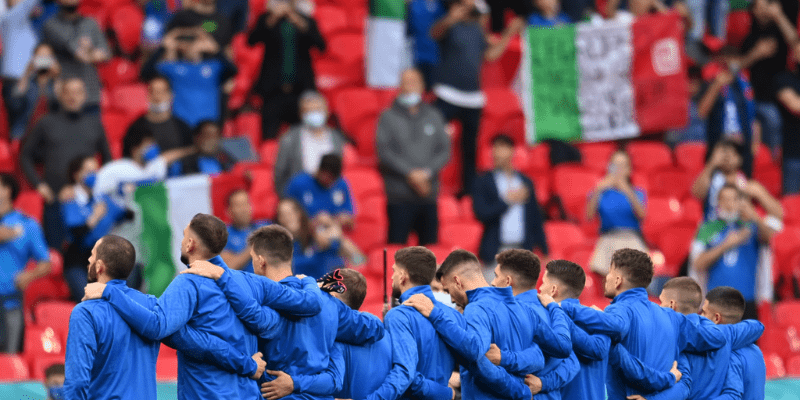The phrase why are Italy fans called tifosi azzurri signals much more than a nickname — it speaks to the soul of Italian football. In this article, ZaneyStrike will guide you through the fascinating story behind this iconic label, dissecting its linguistic roots, historical reasons, and cultural significance. By the end, you’ll understand how tifosi azzurri captures both devotion and identity in one thrilling expression.
What Does “Tifosi” Mean?

Let’s begin with the first word: tifosi. In Italian, tifosi (singular tifoso for males, tifosa for females) refers to passionate supporters of a sports team. Over time, tifosi has come to imply more than just “fans” — it conveys a feverish, committed loyalty, especially in Italian football culture.
The etymology is vivid: the root “tifo” corresponds to typhoid fever, and in the early 20th century, the term tifosi was slang for people consumed by “fever” for a team. Thus, to call someone a tifoso is to call them a fan with burning passion.
In football, the term is used for supporters who chant, wave banners, light flares, coordinate choreographies — in other words, the ultras and organized fan groups. The tifosi are the lifeblood of stadium atmospheres, especially in Italy’s most intense fixtures.
Why “Azzurri”? The Colour, the Dynasty, the Identity
The Blue Shirt That Became a Legacy
Italian national teams — football, rugby, and beyond — are known as Gli Azzurri (“The Blues”). Why blue, when Italy’s flag is green, white, and red? The answer lies in historic symbolism and royal heritage.
When the Italy football team began its international journey in 1910, the first match was played with a white shirt. But in early 1911, during a friendly against Hungary in Milan, the team donned a light blue (specifically Savoy azure) shirt. That shade was chosen to honor the royal House of Savoy, which had united and ruled Italy since the founding of the Kingdom. The blue color was drawn from the royal House’s livery and became a symbolic tie between national identity and monarchy.
Since then, blue has been the default kit color, and Italy wearing blue (maglia azzurra) became more than style — it became identity. The nickname Azzurri gradually replaced generic terms for “the national team,” cementing the color’s symbolism.
Historical and Cultural Anchors
The meaning of azzurro goes dee. It harkens to:
- Savoy dynasty — The royal family’s livery carried the same hue, making it a marker of the national unity forged under their reign.
- Tradition kept alive — Even after the monarchy ended in 1946, the blue remained, becoming a republican symbol unconnected with monarchy.
- National continuity — Over decades, all major Italian national squads adopted azzurro uniforms — football, rugby, basketball — reinforcing the blue as the color of the nation’s sports.
Thus, Azzurri isn’t just “the blues” — it’s a living emblem of Italy’s sporting history.
The Blend: “Tifosi Azzurri”

Putting the two together, tifosi azzurri literally means “blue supporters.” But the scope is richer: it denotes the die-hard fans who root for the Italian national team — Gli Azzurri. This phrase captures both color identity and emotional allegiance.
Throughout matches, stadiums, fan zones, and social media, you’ll hear chants like Forza Azzurri! — “Go, Blues!” — uniting players and supporters under a shared banner of blue pride. It’s a bond across generations, from Modric-era hopefuls to childhood fans singing national anthems.
Why This Nickname Resonates
Emotional resonance
Passion baked into terminology
When you call someone tifosi azzurri, you don’t just say “Italy fans.” You evoke the flame of devotion, the collective heartbeat of voice and banners, the emotional rollercoaster of tournament football.
A unique national identity
Many national teams carry nicknames linked to animals or symbols (e.g. Les Bleus, Socceroos, La Albiceleste). What makes tifosi azzurri distinctive is its combination: one word for the fans (tifosi) and one for the national color/identity (azzurri). It ties supporters directly to the national team’s essence.
Longevity and consistency
Over more than a century, the blue jersey and the tifosi culture have remained central to Italian football identity., tifosi azzurri persists as a consistent label.
Examples and Cultural Touchstones
- In football stadiums, you’ll often see giant blue banners waving, chanting in unison Azzurri songs, or ultras coordinating blue mosaics.
- Famous moments — such as Italy’s World Cup wins (1934, 1938, 1982, 2006) — amplified the legend of the Azzurri and the dramatic support of their tifosi.
- In rugby, the Italy national rugby union team is also called Gli Azzurri, and their supporters are termed tifosi azzurri in that realm too.
- Fan communities worldwide — from Italian diaspora cities to global online forums — adopt the moniker tifosi azzurri, symbolizing a shared passion irrespective of geography.
Why Are Italy Fans Called Tifosi Azzurri? The Meaning Today

In 2025, the phrase still holds full weight. To ask why are Italy fans called tifosi azzurri is to tap into:
- Tradition — generations of Italian fans have rooted themselves in those two words
- Symbolism — blue as identity, royal heritage, national pride
- Emotion — tifosi as devotion, not passive following
Even when Italy struggles, the tifosi azzurri remain loyal. They’re not just supporters — they are co-actors in the narrative, breathing life into every pass, tackle, and goal.
Final Thoughts
Why are Italy fans called tifosi azzurri? Because those words tell a story of legacy, color, and devotion. Tifosi reflects the feverish passion; Azzurri ties that passion to Italy’s sporting soul. For every match, win, loss, and comeback, the tifosi azzurri stand as living proof that football unites history and heart.
If you liked this deep dive, ZaneyStrike invites you to explore more: check out profiles of famous Azzurri players, read match histories, or browse the greatest fan moments of Italy’s blue shirt. Stay tuned — and Forza Azzurri!






